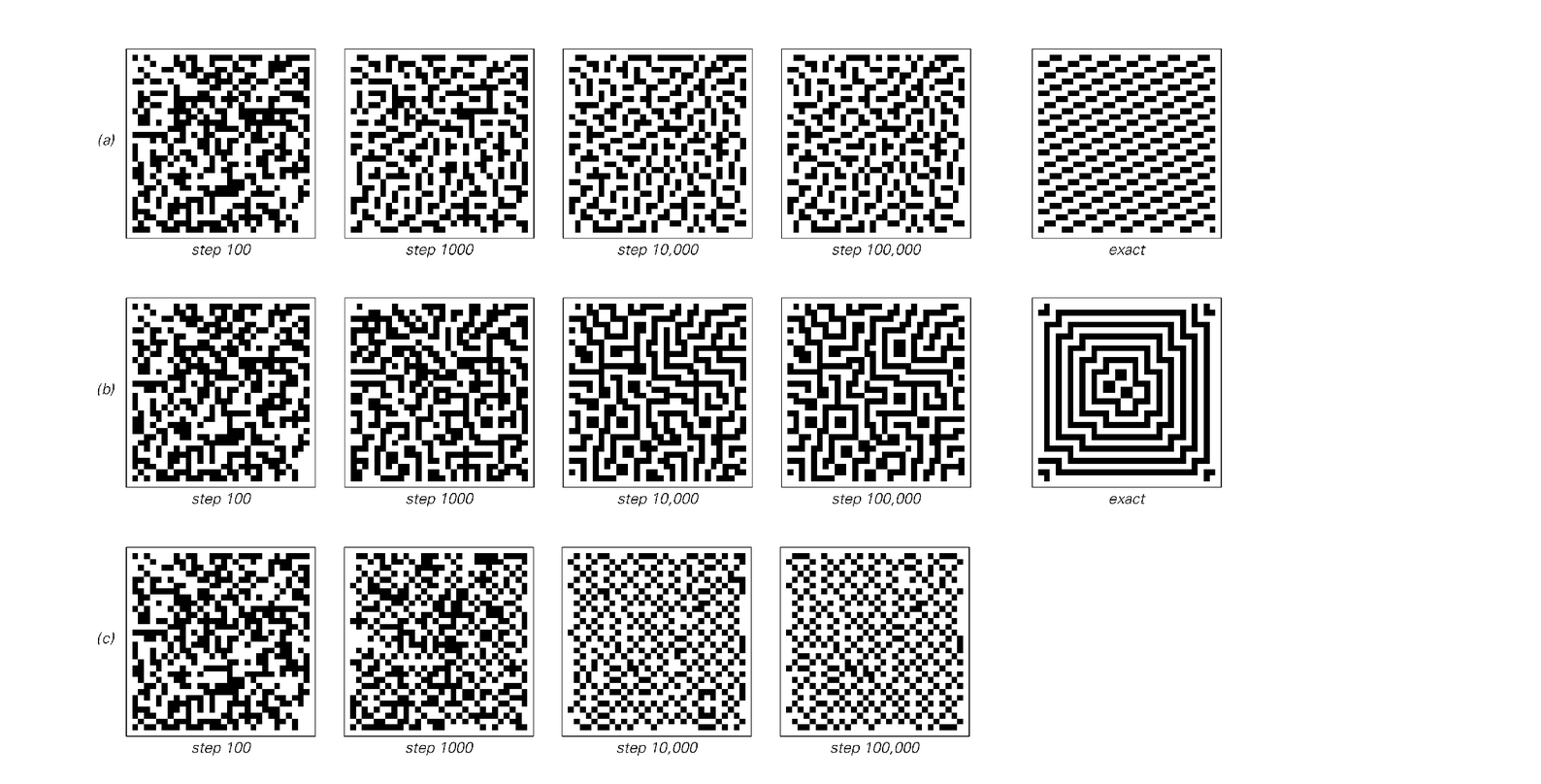So why does the procedure not work better? The problem turns out to be a rather general one. And as a simple example, consider a line of black and white squares, together with the constraint that each square should have the same color as its right-hand neighbor. This constraint will be satisfied only if every square has the same color—either black or white. But to what extent will an iterative procedure succeed in finding this solution?
As a first example, consider a procedure that at each step picks a square at random, then reverses its color whenever doing so reduces the total number of squares that violate the constraint. The pictures at the top of the next page show what happens in this case. The results are

Patterns generated by using the same procedure as in the previous picture but with three different sets of constraints. Case (a) uses the same constraints as in the previous picture, (b) requires every black square and every white square to have exactly two adjacent black squares, and (c) requires every black square to have 3 adjacent black squares and 1 white square, and every white square to have 4 adjacent white squares. In cases (a) and (b) it is possible to satisfy the constraints exactly; in case (c) it is not. The pictures show the evolution of a 30×30 array, which is nearly 10 times the area of the array shown in the previous picture. Although the fraction of squares that violate the constraints is less than 20% after 100,000 steps, the overall patterns still do not look much like the exact results.



